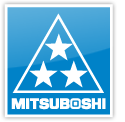
Everything You Should Know About MBL V-Belts
Share
Mitsuboshi Belting Ltd. is a name that carries weight across industries ranging from automotive to agriculture. With a history rooted in Japanese precision engineering, Mitsuboshi has earned a global reputation for manufacturing high-performance drive belts that meet and often exceed OEM standards. Whether you’re servicing a compact lawn tractor, a high-speed industrial drive, or a Japanese vehicle, Mitsuboshi belts provide a reliable, durable solution.
In this article, we’ll explore what makes Mitsuboshi belts a preferred choice, how they compare to other major brands, and how to find the right replacement for your application.
II. What Are Mitsuboshi Belts?
Mitsuboshi offers a broad range of belt types designed for different applications and performance requirements. Their product line includes:
V-Belts: Classical (A, B, C), Narrow (3V, 5V, 8V), and banded options designed for high power transmission in compact systems.
Timing Belts: Rubber and polyurethane synchronous belts with a focus on precision and timing-critical performance.
Variable Speed Belts: Designed to transmit power while allowing a wide range of speed variation, common in snowmobiles and lawn equipment.
Poly-V/Ribbed Belts: Compact, high-torque belts for modern automotive engines and appliances.
Mitsuboshi belts are available both as original equipment manufacturer (OEM) parts and aftermarket replacements, giving you flexibility based on your maintenance needs and budget.
III. Industries and Applications
Mitsuboshi belts are used in a wide range of industries:
Automotive: Widely used by Japanese automakers (e.g., Honda, Toyota, Subaru) for serpentine, timing, and accessory belts.
Lawn & Garden Equipment: Found in mowers, tillers, and snowblowers where precise power transmission is key.
Agricultural Machinery: Belts for tractors, balers, and harvesters requiring rugged performance under variable conditions.
Industrial Machinery: Used in conveyors, compressors, HVAC systems, and factory automation equipment due to high durability and load capacity.
Whether your application is domestic or commercial, Mitsuboshi has likely engineered a belt to meet those specific performance conditions.
IV. Key Advantages of Mitsuboshi Belts
What sets Mitsuboshi apart from the competition? A few standout benefits include:
Japanese Engineering & Global Certification: Manufactured under strict quality control with ISO 9001 and ISO/TS 16949 certifications.
High-Tensile Materials: Use of aramid fiber, EPDM, and synthetic rubber compounds allows for superior strength and reduced belt stretch.
Heat & Oil Resistance: Ideal for high-friction, high-temperature environments like automotive engine bays.
Quiet, Efficient Operation: Engineered tooth profiles and tension cords ensure smooth, noise-free performance.
Cost-Effective Durability: Longer service intervals often mean better overall value compared to some OEMs and competitors.
Mitsuboshi belts are known for balancing performance with long-term reliability—key for users who prioritize uptime and reduced maintenance.
V. How to Identify a Mitsuboshi Belt
Identifying a genuine Mitsuboshi belt starts with understanding their part numbering system. Most belts feature:
Belt Type Designation (e.g., A, 5V, T5)
Length in Inches or mm
Material or Special Features Code (e.g., "K" for Kevlar)
Example:
A34 – A-section classical V-belt, 34 inches outside circumference
5PK875 – 5-rib poly-V belt, 875mm effective length
Some Mitsuboshi belts also carry OEM part numbers. For instance, a Honda timing belt may have both the Honda OEM number and a Mitsuboshi code.
VI. Cross Reference Guide
Mitsuboshi belts can often be cross-referenced with other leading brands like Gates, D&D, Goodyear, and Dayco. For example:
-
Mitsuboshi A28 ≈ Gates 6728 ≈ D&D A28
-
Mitsuboshi 5PK875 ≈ Continental 5PK875 ≈ Goodyear 4050875
When searching for a replacement, using a cross-reference tool or lookup sheet is the fastest way to ensure proper fit. This is particularly helpful for equipment that originally shipped with a Mitsuboshi belt but now needs a locally sourced equivalent.
Many belts can be matched by section, length, and material even if brand names differ.
VII. Where to Buy Mitsuboshi Belts
You can purchase Mitsuboshi belts through several channels:
Authorized Distributors: Industrial supply stores or repair shops with direct access to OEM inventory.
Online Retailers: Amazon, eBay, and specialized sites like PowerDriveBelts.com often carry Mitsuboshi belts or direct replacements.
OEM Parts Channels: If you're maintaining a Japanese car or branded machinery, your dealer may stock Mitsuboshi under an OEM number.
Pro Tip: Always check for part number formatting and packaging details. Genuine Mitsuboshi belts typically come with product and batch numbers clearly marked.
VIII. FAQs About Mitsuboshi Belt
Q: Are Mitsuboshi belts made in Japan?
A: Most are produced in Japan, Thailand, or other Mitsuboshi-certified factories following the same quality standards.
Q: Do they fit U.S.-spec equipment?
A: Yes. Mitsuboshi supplies belts to many OEMs that sell into the U.S. market, and most dimensions conform to industry standards (RMA, ISO).
Q: How do they compare to OEM belts?
A: In many cases, Mitsuboshi is the OEM supplier—particularly for Japanese brands. Even when used as aftermarket replacements, they meet or exceed OEM specs.
Q: What’s the warranty or return policy?
A: This depends on the seller. Most reputable retailers offer 30- to 90-day return windows if the belt is unused and in original condition.
IX. Final Thoughts
Mitsuboshi belts offer a compelling mix of engineering quality, broad application coverage, and competitive pricing. Whether you're maintaining your own mower or servicing a fleet of industrial equipment, Mitsuboshi provides a belt you can rely on.
Their high-tensile cords, heat resistance, and wide compatibility make them a favorite among technicians and engineers alike. If you're looking for a trusted belt replacement—especially for Japanese brands—Mitsuboshi deserves a spot at the top of your list.

